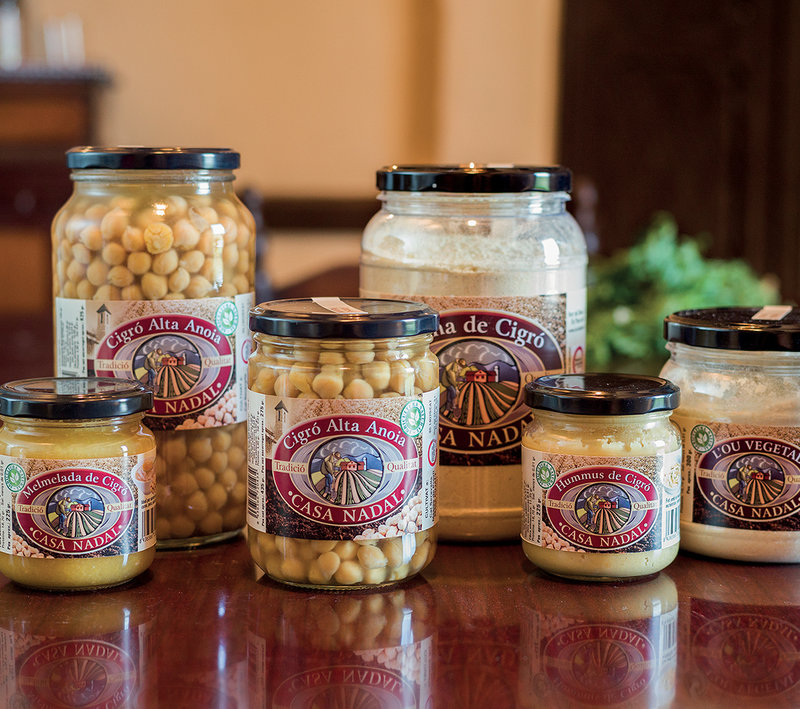Basket
Text: CUINA MAGAZINE Photo: Anna García Frigola
Baby chickpeas from Alta Anoia
The miniature legume has in recent years regained its past popularity
This is a variety of small chickpea native to the county of Alta Anoia, an area situated inland from Barcelona near Igualada, and on the way towards Central Catalonia. The once popular chickpea has regained its rightful gastronomic reputation in recent years, due to the difficult situation of other cereal crops.
It is quite small, has a very smooth skin, which swells up to three times its size during cooking, and its delicate flavour and unctuous texture is a far cry from the floury texture that chickpeas at times exhibit. The seeds are planted by hand in October and November, and then again in January and February. The plants grow mainly between March and July, and flower in June. During August, the plant ripens and is dried. The pods are picked by hand and once the harvest is complete, the seeds are thrashed from the plants using sticks to separate the chickpeas, which are then gathered and manually selected to undergo the drying process.
With chickpeas, we are talking about a food commodity that goes back thousands of years, and which has been a staple in the diet of peoples the world over, in the past often helping to save entire populations from famine. Originally from the Middle East, the enormous nutritional value, versatility, vitamin and mineral content of chickpeas, as well as their durability and long storage life once they have been dried, have seen the crop spread all over the world, until they now festoon the tables of rich and poor alike, in a myriad of dishes and preparations.

